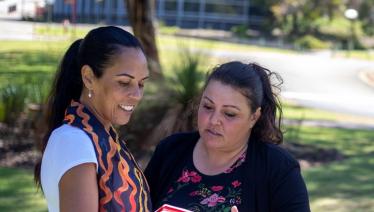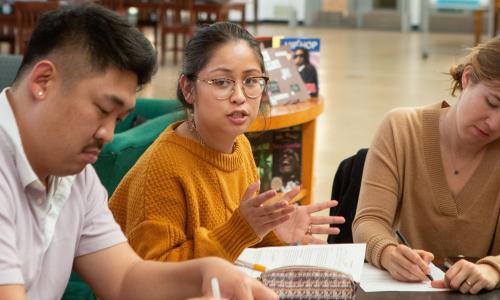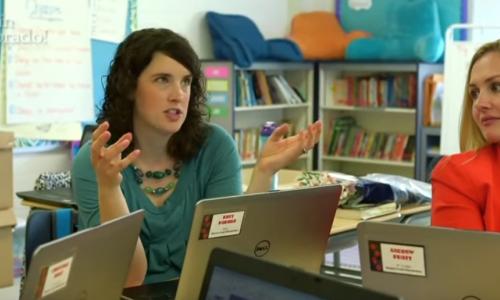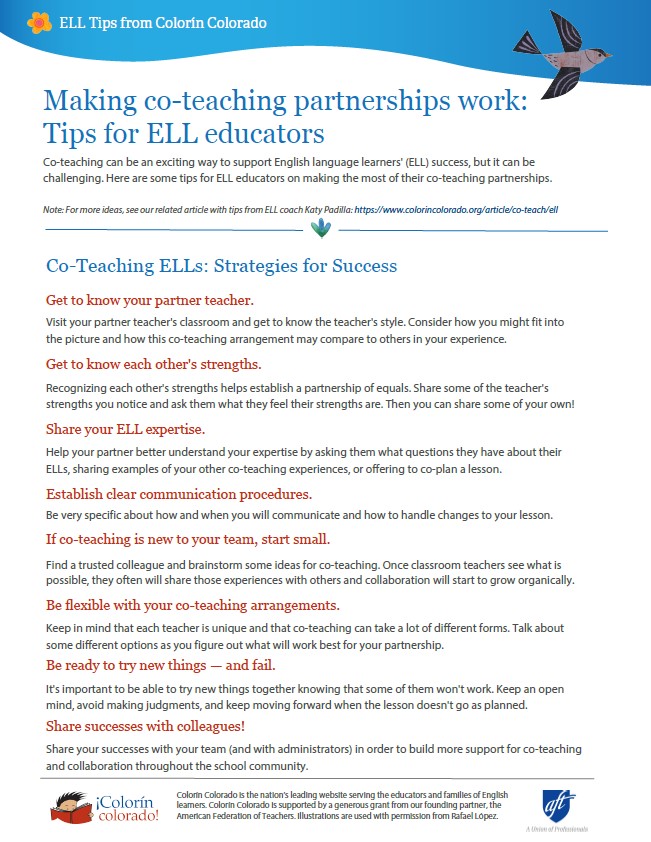Many K-12 schools in the United States have at least one teacher who has specialized training in teaching English language learners (ELLs). It's important for the entire school community, especially administrators, to understand the expertise that ELL teachers and specialists bring to the table. Learn more from the following overview!
What do ELL teachers do?
ELL teachers are highly trained professionals who bring a wealth of expertise in language development. While certification requirements vary by state, most ELL teachers are likely to have special certifications in English language development (ELD) instruction, including methods, language, linguistics, culture, and assessment that gives them an in-depth level of preparation for working with ELLs.
ELL teachers wear many hats and have a wide range of responsibilities. Before detailing some of those areas of expertise, however, it is crucial to underscore that teaching ELLs is a shared responsibility. Schools with strong ELL programs have invested in the training and professional development of classroom and content-area teachers throughout the school and have collaborative structures in place to maximize the impact of the ELL teacher or ELL teams. Many states are also now recognizing the benefits of increasing their entire staff’s capacity to teach ELLs and require content area teachers to be certified in a certain number of hours of ELL training or to be fully "ESOL Endorsed".
In addition, there are different kinds of ELL teachers and varying roles that ELL teachers may play across program models or depending on the student population. For example, an ELL teacher may work within a Sheltered Instruction program, may co-teach or push in to classrooms, may pull out students (although this practice is less common than it used to be), or may teach within a bilingual or dual-immersion program.
Some areas of expertise that ELL teachers are likely to bring to their school community include the following. While this list is fairly comprehensive, it is not intended to suggest that all ELL educators will have expertise in each of these areas or should be responsible for each of these tasks alone.
EL identification and assessment
- Administering and analyzing identification screeners that determine a student’s eligibility for language learning services
- Administering federally-mandated English language proficiency (ELP) assessments annually (which vary from state to state)
- Monitoring students’ language development
- Ensuring students have appropriate accommodations for assessments and for instruction throughout the school year in grade-level classes
- Keeping track of ELP data for reporting purposes
- Collaborating with district assessment team and school guidance team around identification and assessment practices
English Language Development instruction
- Supporting students’ English academic language development while honoring and leveraging their home languages (or in the case of bilingual programs, developing English language skills alongside academic skills in the students’ home languages)
- Differentiating instruction for different language proficiency levels (i.e., beginner, intermediate, advanced, etc.)
- Co-planning or co-teaching with colleagues or grade-level teams for instruction and assessment
- Developing instructional approaches rooted in best practices of Culturally Responsive Instruction, Culturally Relevant Instruction and Culturally Sustainable Pedagogy, such as welcoming students’ cultures and languages within the school setting
- Researching, recommending, and providing professional development for colleagues around language development
Content-area instruction
- Providing academic language instruction that gives students access to grade-level content
- Collaborating with grade-level teachers to plan and scaffold instruction
- Offering professional development to colleagues on best practices such as learning how to write language objectives
Collaboration in the school setting
Collaborating with colleagues on behalf of ELLs, including:
- Classroom and content-area teachers to support instruction
- Interpreters and family liaisons to support family partnerships
- Gifted and talented teams around identification and support of gifted students
- Special education teams around questions of special education identification and services
- Guidance counselors about appropriate coursework, graduation requirements, and plans after high school, such as college or trade programs
- Counselors and social workers around social-emotional issues
- Social workers or advocates who are addressing students’ basic needs
- Front office staff to ensure proper protocols for students entering the school
- Administrators to strengthen programming, collaboration, and family engagement
- District offices or Title programs managing different ELL funding streams and grant opportunities
Family engagement
- Communicating with multilingual families in their home languages (and sharing outreach strategies with colleagues to increase their own capacity for communication with families)
- Advocating for families’ access to information in their home language and processes that impact their child, such as in the case of special education
- Building relationships to get to know students’ strengths, needs, and goals
- Ensuring that families have access to information in their home language (to which they have a legal right)
- Partnering with family liaisons to find effective ways to establish two-way communication with families
- Supporting family engagement around school events and initiatives
- Connecting with stakeholders in ELL families’ communities, such as community organizations and religious institutions
- Creating a culture of safety at the school for all families
- Setting the tone for a welcoming, assets-based climate for ELLs and their families
How ELL Teachers Can Share Their Expertise
If you are an ELL teacher and are looking for ways to share your expertise more broadly in your environment, take a look at the ideas in these resources, which can be adapted and updated for your current situation:
- ELL Teacher Strengths
- You Are Already A Leader: Identifying Your Leadership Skills on Behalf of ELLs
- What's Your "Elevator Speech" About Your Expertise with ELLs?
- The Role of ESL Educators (Valentina Gonzalez)
Closing Thoughts
Collaboration around ELL instruction is crucial to maximize students’ opportunities for success across grade levels and content areas. The better that administrators and classroom teachers alike understand what kinds of expertise that ELL teachers bring, the more opportunities there will be to make the most of that experience and to maximize the capacity of the entire staff to support ELL success.
Note: To read more about what constitutes appropriate staffing for ELL instruction, see Chapter 3 of the U.S. Department of Education’s EL Toolkit. We’d like to hear from you! What would you like to add from your ELL responsibilities? Leave a comment below!
Related Videos
Dr. Karen Woodson on what principals need to know about what ELL teachers do
ELD specialist Diana Alqadhi: Taking time to get to know your students
ELLs Belong to All of Us: The Role of ELL Specialists in Collaboration
Sharing success stories about ELL collaboration
For ELL educators: What's your elevator speech?
Acknowledgements
Special thanks to Dorina Sackman, Diane Staehr Fenner, and Sydney Snyder for their contributions to this article.



 These tips are
These tips are 
 For additional ideas, see this
For additional ideas, see this